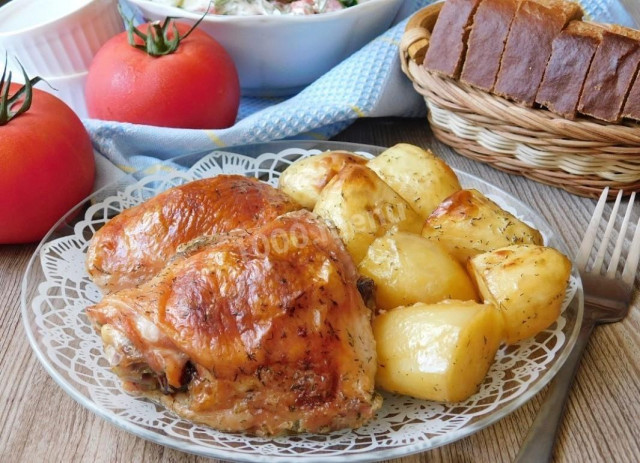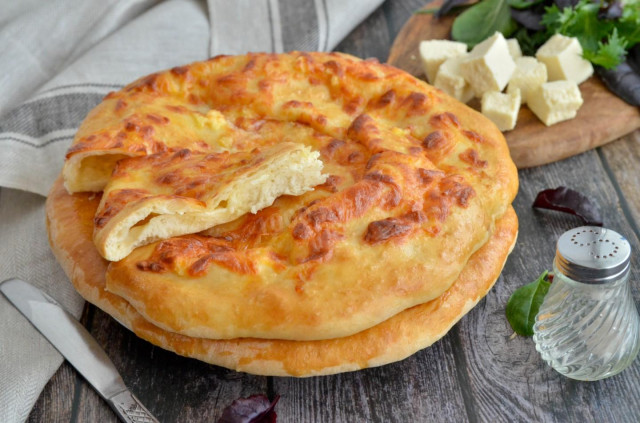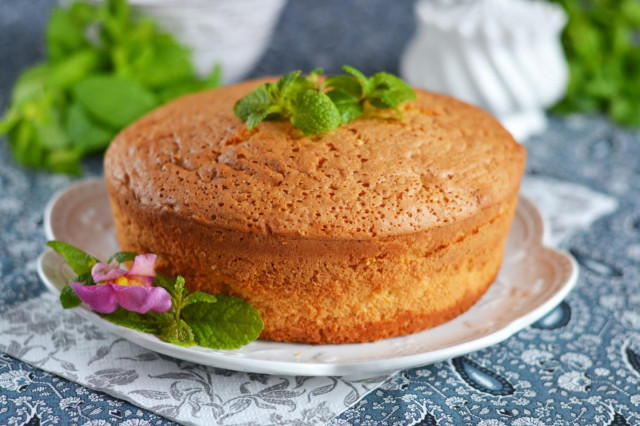Composition / ingredients
Step-by-step cooking
Step 1:

How to make a cake Melting in your mouth? First bake a sponge cake. How to make a biscuit? Measure out the required amount of kefir, you can take it of any fat content. Add soda to it. Stir and set aside so that the reaction between the acid and the alkali goes. The mass will start to foam a little and increase in volume. Therefore, take a much larger glass.
Step 2:
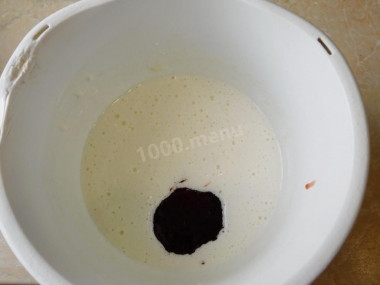
Beat eggs with sugar with a mixer until fluffy light mass. Be sure to wash the eggs before use, as even the seemingly clean shell may contain harmful bacteria. It is best to use food detergents and a brush. Then add the jam to the bowl. In this case, I have lingonberry. But you can use any, as long as there are no bones in it. It turns out very tasty sponge cake for jam from black currant.
Step 3:

Then pour the kefir mass into the eggs and mix. Pour the sifted flour into the dough and knead the dough. It is important to sift the flour to saturate it with oxygen. Then the baking will turn out to be airy and will rise well when baking.
Step 4:
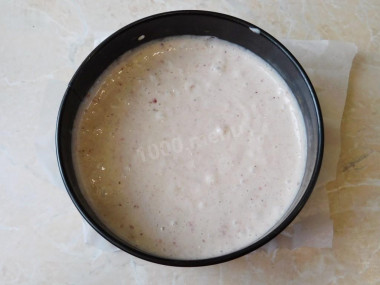
Pour the finished dough into a baking dish (20-22cm), greased with oil, and put it in the oven, preheated to 180 degrees for 40-50 minutes. Check readiness with a wooden stick — stick it in the middle of the biscuit, it should come out dry.
Step 5:

Remove the finished biscuit from the mold and cool it. Wrap it in plastic wrap and put it in the refrigerator overnight. Due to the reaction of kefir with soda, the sponge cake turns out to be very tender and porous, so it will be difficult to cut it immediately after baking. In the refrigerator, it will lie down a little and freeze, so it will be more convenient to work with it. Cut the leftover biscuit into 3 cakes.
Step 6:

Prepare the filling. How to make the filling? To begin with, chop the walnuts with a sharp knife and fry them for a few minutes in a hot, dry frying pan. Then pour the nuts into a separate bowl and cool.
Step 7:
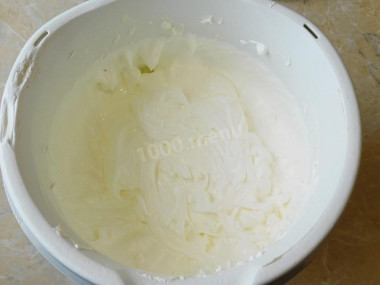
For the cream, take sour cream with a fat content of at least 25% and combine with powdered sugar. Whisk the cream into a fluffy mass. It is preferable to use powder, so that the sugar does not crunch in the cream.
Step 8:
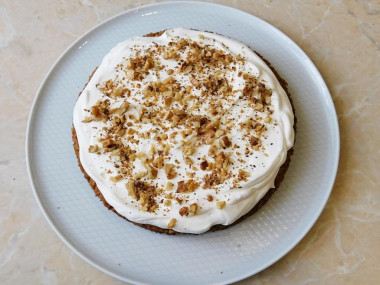
Soak the sponge cake a little, with water or syrup. Brush the cake liberally with sour cream and sprinkle with walnuts. Thus, layer all the cakes.
Step 9:

Assemble the cake, liberally smearing the top and sides with cream.
Step 10:
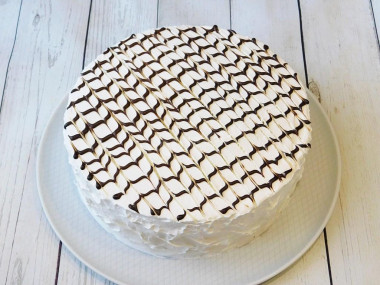
Minimally decorate the cake with melted chocolate. Put the finished cake in the refrigerator for a few hours to soak it. Sour cream perfectly impregnates all sponge cakes and the finished cake will simply melt in your mouth. Have a nice tea party!
If you don't like nuts, then they can be excluded from the filling. It won't make the cake any worse. Instead of nuts, you can add jam impregnation. Try it!
All the secrets of making a tall, beautiful, lush sponge cake read the article about the biscuit dough .
Keep in mind that everyone's ovens are different. The temperature and cooking time may differ from those specified in the recipe. To make any baked dish successful, use useful information about the features of ovens !
Is it possible to replace baking powder with soda, how to add them correctly so that the baking is lush, how to avoid an unpleasant soda taste and much more, read the article "Baking powder or baking soda - which is better?"
Calorie content of the products possible in the dish
- Sour cream with 30 % fat content - 340 kcal/100g
- Sour cream of 25 % fat content - 284 kcal/100g
- Sour cream with 20 % fat content - 210 kcal/100g
- Sour cream of 10 % fat content - 115 kcal/100g
- Sour cream - 210 kcal/100g
- Chicken egg - 157 kcal/100g
- Egg white - 45 kcal/100g
- Egg powder - 542 kcal/100g
- Egg yolk - 352 kcal/100g
- Ostrich egg - 118 kcal/100g
- Milk-nut chocolate - 542 kcal/100g
- Nutty chocolate - 580 kcal/100g
- Porous milk chocolate - 506 kcal/100g
- Creamy chocolate - 560 kcal/100g
- Chocolate - 550 kcal/100g
- Walnuts - 650 kcal/100g
- Black Walnut English Walnut - 628 kcal/100g
- Black Persian Walnut - 651 kcal/100g
- Walnut oil - 925 kcal/100g
- Whole durum wheat flour fortified - 333 kcal/100g
- Whole durum wheat flour, universal - 364 kcal/100g
- Flour krupchatka - 348 kcal/100g
- Flour - 325 kcal/100g
- Granulated sugar - 398 kcal/100g
- Sugar - 398 kcal/100g
- Kefir fat - 62 kcal/100g
- Kefir of 1% fat content - 38 kcal/100g
- Low-fat kefir - 30 kcal/100g
- Kefir "doctor beefy" 1,8% fat content - 45 kcal/100g
- Kefir 2.5% fat content - 53 kcal/100g
- Powdered sugar - 374 kcal/100g
- Baking soda - 0 kcal/100g
- Any jam - 271 kcal/100g


